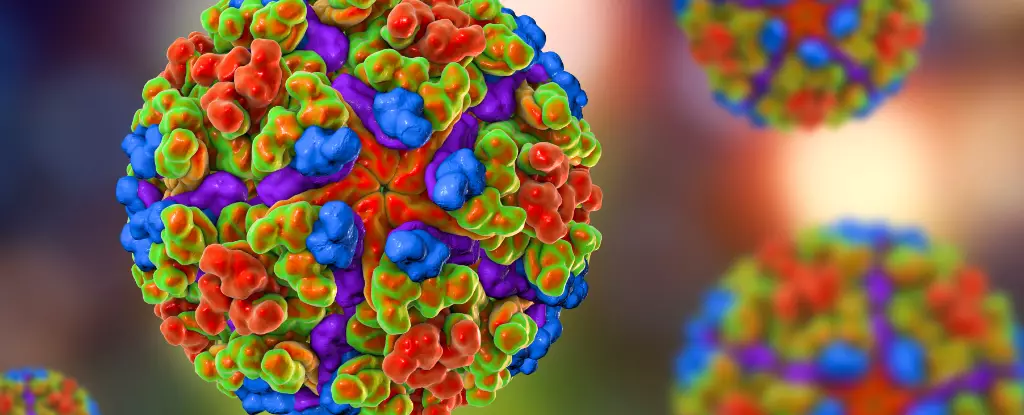Recent warnings from the World Health Organization (WHO) reveal a sobering reality: the resurgence of chikungunya could soon become a pandemic of unprecedented scale. This mosquito-borne virus, once confined to specific regions, now threatens nearly 6 billion people, echoing patterns from early 2000s outbreaks that left millions affected. The resurgence is no coincidence but a stark indicator of how climate change, urbanization, and global mobility are fueling the spread of diseases previously considered regional threats. Unlike familiar illnesses such as dengue or Zika, chikungunya remains under the radar for many, yet its potential impact is grave, especially as all signs point to a repeat of history if decisive action isn’t taken promptly.
This emerging epidemic signals much more than a mere resurgence of an overlooked disease; it signifies a failure in global preventative health infrastructure. The WHO’s emphasis on warning signs from 20 years ago underscores the importance of learning from past outbreaks while acknowledging that complacency can be catastrophic. The alarming fact that over one-third of populations in affected regions like Réunion are already infected further illustrates how rapidly the virus can propagate in a susceptible community. The question isn’t just whether we are prepared but whether we are willing to adapt faster than the virus itself.
Why History Repeats Itself—And Why We Should Be Concerned
The pattern of chikungunya’s resurgence is unmistakable. The outbreak that swept through the Indian Ocean in 2004-2005, decimating small islands, set the stage for a global upheaval—one that saw nearly half a million people affected across continents. The patterns have persisted, with regions such as Madagascar, Somalia, Kenya, and parts of South Asia experiencing renewed transmission. As the virus crosses borders via travelers, the risk of local outbreaks in Europe is increasingly tangible, with cases emerging in France and Italy. This phenomenon highlights how interconnected our world has become and how quickly a local outbreak can spiral into a broader crisis.
Chikungunya shares symptoms with dengue and Zika—fever, joint pain, and rashes—which complicates diagnosis and surveillance efforts. Many healthcare systems, especially in vulnerable regions, lack the infrastructure to swiftly detect and respond to emerging cases. This gap in preparedness allows the virus to silently spread, amplifying the potential for larger outbreaks. It’s particularly troubling considering the virus’s low case fatality rate, which may seem reassuring; however, the sheer volume of cases can translate to thousands of deaths, overwhelming health services and economies.
The presence of Aedes mosquitoes, especially Aedes aegypti and Aedes albopictus—commonly known as tiger mosquitoes—amplifies the threat. These vectors thrive in urban environments with stagnant water and are increasingly migrating northward due to rising global temperatures, a direct consequence of climate change. This expansion means that areas historically untouched by such diseases may soon face the brunt of an epidemic, catching populations unprepared and healthcare systems unready.
Climate Change and Urbanization: The Unseen Catalysts
The expansion of Aedes mosquitoes is no accident but a direct result of human-driven environmental changes. Rising temperatures, irregular rainfall patterns, and deforestation create perfect breeding grounds for these mosquitoes. Urbanization, with its proliferation of water storage containers, poorly managed waste, and stagnant water collections, provides perfect habitats for mosquito larvae to thrive. These factors combine to escalate the danger, turning what was once localized into a global threat.
What makes this situation even more unsettling is the creeping nature of the threat—mosquitoes are not only living in tropical zones anymore; they’re venturing into temperate zones, including parts of Europe and North America. The mosquito’s adaptability underscores a naive complacency in many countries that historically have not faced such diseases. The rising incidence of imported cases in Europe should serve as a wake-up call that the disease may soon establish footholds in new environments lacking herd immunity or robust health infrastructure.
Despite the low mortality rate, the social and economic costs are monumental. The millions who could contract chikungunya might endure months of debilitating joint pain, impacting productivity, mental health, and overall quality of life. This is not merely a disease of discomfort; it is a threat to social stability and economic productivity, especially in poorer regions where healthcare resources are scarce.
What Must Be Done Now—Before It’s Too Late
The WHO’s warning is clear: proactive measures are essential, not optional. Early detection, community awareness, and infrastructure improvement are vital to curtailing this outbreak. Simple interventions—like eliminating stagnant water, using mosquito repellents, and deploying insecticides—are effective yet underutilized in many parts of the world. More importantly, health authorities need comprehensive surveillance systems capable of rapid response, especially in regions where virus transmission is on the rise.
At the individual level, the responsibility also lies with us. Protecting ourselves and our communities through basic preventative steps can significantly slow the virus’s spread. Governments, health organizations, and citizens must act collectively—strengthening healthcare systems, investing in research for vaccines and treatments, and implementing environmentally sustainable policies that reduce mosquito breeding grounds.
The big question remains: will global society recognize the gravity of this threat in time? The signs are unmistakable, the pattern familiar, and the stakes incredibly high. Our response will determine whether chikungunya becomes another forgotten epidemic or a catalyst for renewed global health resilience.

